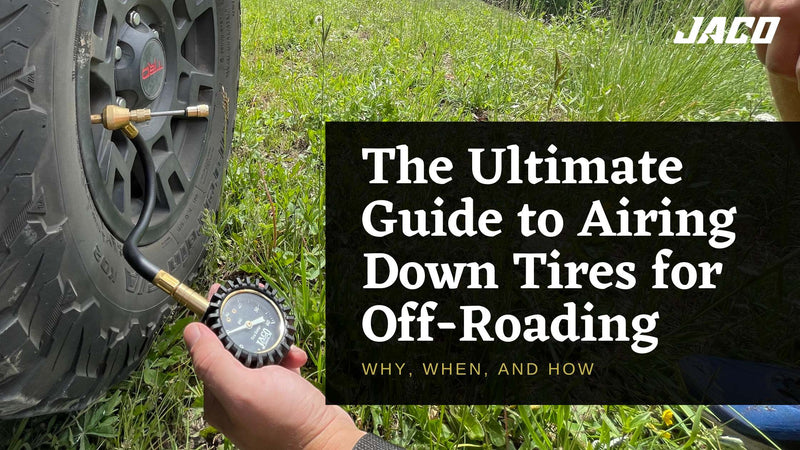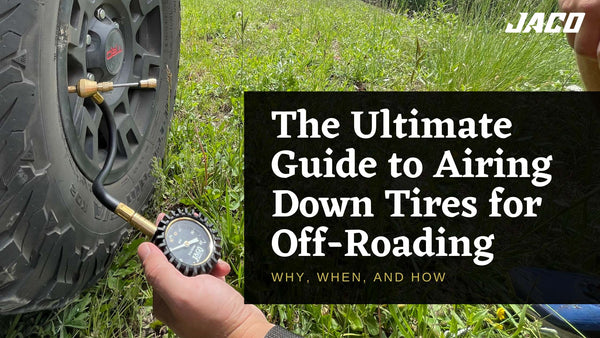Tire size refers to the dimensions of a tire, typically displayed on the tire sidewall. It includes width, aspect ratio, and wheel diameter.
Understanding tire size is essential for ensuring proper fitment and performance for your vehicle. Choosing the correct tire size can impact your vehicle’s handling, fuel efficiency, and overall driving experience.
By familiarizing yourself with how tire sizes are measured and what the numbers on your tires indicate, you can make informed decisions when purchasing new tires.
In this guide, we will delve into the specifics of tire sizing, including how to read tire size markings and factors to consider when selecting the right tire size for your vehicle.
This information will empower you to make the best choice for your driving needs and ensure your safety on the road.

Credit: jacosuperiorproducts.com
Decoding Tire Size
Understanding tire size is crucial when it comes to selecting the right tires for your vehicle. The tire size code provides information about the tire’s width, aspect ratio, and rim diameter.
Knowing what these numbers and letters mean helps in finding the perfect fit for your car.
Breaking Down The Numbers
Tire size holds vital information essential for proper vehicle maintenance.
- The first number indicates tire width in millimeters.
- The second number represents tire height as a percentage of the width.
- The letter “R” signifies radial construction.
- The following number denotes wheel diameter in inches.
Understanding The Letters
The letters in a tire size provide additional details for selection.
- P: Passenger tire.
- LT: Light truck tire.
- C: Commercial tire.
- ST: Special Trailer tire.

Credit: mbaction.com
Impact Of Tire Size
Impact of Tire Size
Tire size has a significant impact on the overall performance and safety of your vehicle.
Understanding how tire size influences various factors like performance and safety considerations is crucial for making informed decisions. Let’s delve into the effects of tire size in more detail.
Performance Effects
- Acceleration: Smaller tires may offer quicker acceleration due to reduced weight.
- Handling: Larger tires generally provide better grip and cornering stability.
- Fuel Efficiency: Tire size affects rolling resistance, impacting fuel economy.
Safety Considerations
- Braking Distance: Larger tires often result in shorter braking distances.
- Stability: Proper tire size contributes to vehicle stability and control.
- Traction: The right tire size enhances traction in various road conditions.
Choosing The Right Tire Size
Vehicle Compatibility
When selecting the tire size, it’s crucial to ensure that they are compatible with your vehicle. The appropriate tire size can significantly affect your vehicle’s performance and safety.
Terrain And Weather Factors
Consider the terrain and weather conditions in your area when choosing the right tire size. This factor is crucial because certain tire sizes perform better in specific terrain and weather scenarios.
It’s essential to understand the meaning of tire size when selecting the correct tires for your vehicle. The tire size can impact numerous aspects of your driving experience, including performance, fuel efficiency, and safety.
Here’s a comprehensive guide to help you make an informed decision when choosing the right tire size for your vehicle.
When it comes to vehicle compatibility, it’s crucial to ensure that the chosen tire size matches the specifications recommended by the vehicle manufacturer.
The right tire size contributes to optimal handling and stability on the road.
Furthermore, understanding the terrain and weather factors is vital in selecting the appropriate tire size.
Whether you frequently drive on rough terrains or face extreme weather conditions, considering these factors can help you identify the most suitable tire size for your vehicle.
Modifying Tire Size
Modifying the tire size of your vehicle can be an enticing option for many car enthusiasts. Whether you’re looking to enhance performance or change the look of your vehicle, understanding the potential benefits, risks, and considerations associated with modifying tire size is essential.
In this article, we will dive into this topic and help you make an informed decision.
Potential Benefits
Modifying the tire size of your vehicle can offer several potential benefits, including:
- Improved Performance: A larger tire size can provide better traction and handling, especially during cornering or acceleration. Additionally, it can enhance braking distance, allowing for more controlled stops.
- Enhanced Appearance: Changing the tire size can give your vehicle a more aggressive or stylish look. With the right tire size, you can achieve a customized appearance that reflects your personal taste and preference.
- Increased Ground Clearance: Opting for a larger tire size can help increase the ground clearance of your vehicle. This can be particularly useful for off-roading enthusiasts who need more clearance to navigate rough terrains.
Risks And Considerations
While modifying tire size can bring certain benefits, it’s important to be aware of the risks and considerations involved:
- Speedometer and Odometer Accuracy: Changing the tire size can affect the accuracy of your vehicle’s speedometer and odometer. It may display incorrect readings, potentially leading to legal issues and affecting the overall performance of your vehicle.
- Suspension and Handling Issues: Altering the tire size can impact the suspension and handling of your vehicle. It may result in a stiffer or softer ride, depending on the changes made. This can potentially affect the overall comfort and control of your vehicle.
- Warranty and Insurance: Modifying the tire size may void your vehicle’s warranty, as well as impact your insurance coverage. It’s crucial to check with your manufacturer and insurance provider to understand their policies and any potential consequences.
- Alignment and Tire Wear: Changing the tire size can also affect the alignment of your vehicle. It may lead to uneven tire wear, decreasing the lifespan of your tires and potentially causing handling issues.
Before modifying the tire size, it is recommended to consult with a knowledgeable mechanic or tire professional.
They can provide expert advice based on your specific vehicle and needs, helping you make an informed decision that is safe and suitable for your vehicle.
Maintaining Optimal Tire Size
Regular inspections and understanding tire replacement guidelines are crucial in maintaining optimal tire size for your vehicle.
The tire size refers to the dimensions and characteristics of a tire, prescribed by the manufacturer. It plays a vital role in safety, performance, and fuel efficiency.
By adhering to the following guidelines, you can ensure that your tires always provide optimal performance.
Regular Inspections
Regularly inspecting your tires helps in identifying any issues that may impact their size and performance. Below are some key aspects to consider during these inspections:
- Check for signs of wear and tear, such as uneven tread wear, bulges, or cracks.
- Measure the tread depth using a tread depth gauge. This will help you determine when it’s time for a replacement.
- Assess the inflation pressure to ensure it matches the recommended levels mentioned in your vehicle’s manual. Improper inflation can lead to abnormal wear and affect the overall tire size.
- Inspect for any foreign objects stuck in the tread, which can cause punctures or other damage.
- Look for signs of misalignment or suspension issues, as they can contribute to irregular tire wear and affect the tire size over time.
Replacement Guidelines
Understanding the guidelines for tire replacement is essential to maintain optimal tire size. Here are some factors to consider:
- Follow the manufacturer’s recommendations for tire replacement. They provide specific guidelines on when to replace tires based on tread depth, age, and other factors.
- Check the DOT (Department of Transportation) code on the tire sidewall. The last four digits represent the week and year of manufacture. Tires older than six years, even with sufficient tread depth, should be replaced due to aging concerns.
- Consider the specific driving conditions and environment in which your vehicle operates. For example, if you frequently drive on rough roads or in extreme weather conditions, your tires may wear out faster and require more frequent replacements.
- Consult a tire professional for recommendations based on your vehicle’s weight, load capacity, and intended usage to ensure the replacement tires are suitable for your needs.
By conducting regular inspections and following the recommended guidelines for tire replacement, you can maintain the optimal tire size for your vehicle.
This not only promotes safety but also enhances performance, stability, and fuel efficiency.

Credit: m.youtube.com
Frequently Asked Questions On What Does Tire Size Mean
What Does Tire Size Mean?
Tire size refers to the dimensions of a tire, including its width, aspect ratio, and rim diameter. It is written on the sidewall of the tire and expressed in a series of numbers and letters.
Understanding tire size is crucial when buying new tires as it ensures a proper fit and optimal performance.
Conclusion
Choosing the right tire size is crucial for your vehicle’s performance and safety. Understanding what the numbers and letters on your tire sidewall mean can help you make informed decisions.
With the right size, you can enhance handling, traction, and fuel efficiency.
Remember to consult your vehicle manual for the recommended tire size.

Sudatta is a passionate automotive enthusiast and expert in the field. With a keen eye for detail and a love for all things automotive, he shares insightful articles and reviews to ignite the automotive passion in readers.




